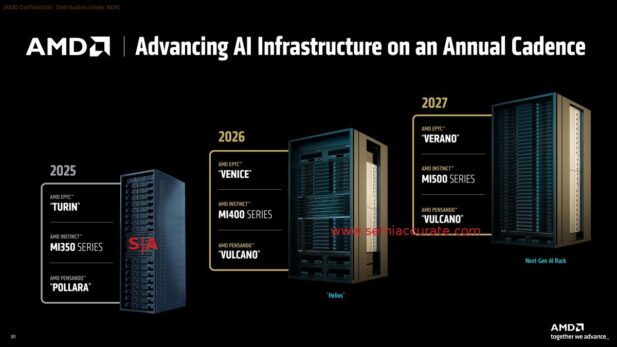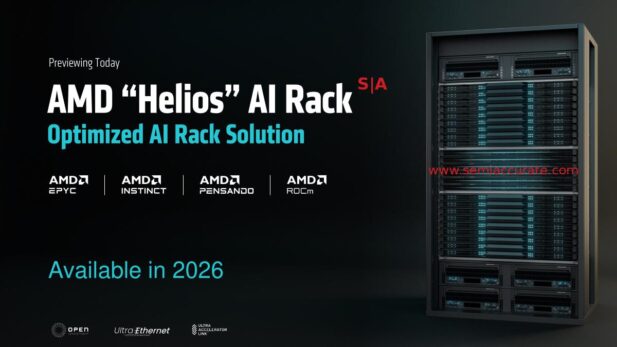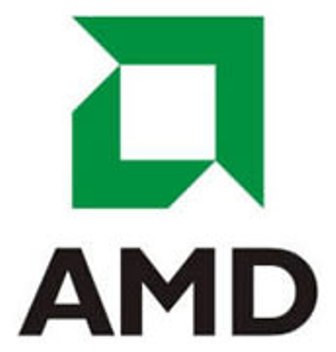At AMD’s Advancing AI event, they laid out the roadmap for future AI GPUs and racks. SemiAccurate noticed a few interesting bits about it other than the code names and specs.
First off is the release of the new code names, not MIxxx but the internal code names for racks. This may not be attention grabbing as chip names but since the rack is quickly becoming the basic sales unit, it is more important to the market. What is new? Take a look at the slide below.

The Future is incremented by 100’s
There are a few things to look at here starting with a pretty widely known name being officially outed, Verano. Verano is the second CPU on the upcoming Venice 16-channel platform. Think of Verano as the Genoa platform’s Turin. Yes that parses but unless you are steeped in AMD code name minutia, just smile, nod and move on. It is better that way, trust us.
Update June 16, 2025 @ 945am: Well we screwed this up, and we blame chronic lack of sleep last week coupled to ultra-short time lines to write up the info. Verano is _NOT_ the successor to Venice, it is a Venice variant. Florence is Venice+1, something we knew and should have remembered before writing the above paragraph.
Back to the important bit, the racks. Helios is the next gen MI400 series reference rack design while the cleverly named “Next-Gen AI Rack” is for the MI500 series. Interesting bit number one is that if these roadmaps are correct, the yearly cadence of going MIx00 to MIx50 then on to MIy00 is going out the door. Now we have the hundreds digit going up every year. The open question is whether this is a marketing claim or does it indicate that a real architecture change is now a yearly thing. Time will tell, or maybe two paragraphs from now will.
Many will overlook the networking aspect of the racks but don’t. Nvidia has their various forms of proprietary interconnects and AMD is working hard to get their own bespoke interconnects. The big difference is that AMD’s approach is to use open standards and not to lock people in. Sure AMD is way behind here but they are catching up fast and should be much cheaper when they get there.
The Pensando roadmap brings us Vulcano in 2026 and it sticks around for 2027. AMD updates platforms for major changes like PCIe and/or DDR updates because this is the smart thing to do. This strongly indicates that the MI500 line in the 2027 rack design is an iteration of the MI400 not a brand new architecture. At the very least the IO infrastructure at the platform level shouldn’t change much which is a good thing for validation/deployment costs and TCO.

Must refrain from obvious joke….
Last comes the important bit. Take a look at the Helios rack above, notice anything odd? No I didn’t totally screw up the aspect ratio when I captured this slide, nor are the top/bottom of rack bits half wide, they are full size 19″ or 21″ OCP devices, two side by side. For the math averse that means 38″ or 42″ racks but we can confirm they are OCP double-wide form factor racks. No we won’t do the obvious joke tempting though it is. This is what everyone will be going to, the 19/21″ rack form factor is dead or at least coughing blood at the moment.
So that is the high level news that has been disclosed at Advancing AI, at least so far. There is a lot more technical detail that we will be bringing you as time allows, stay tuned.S|A

